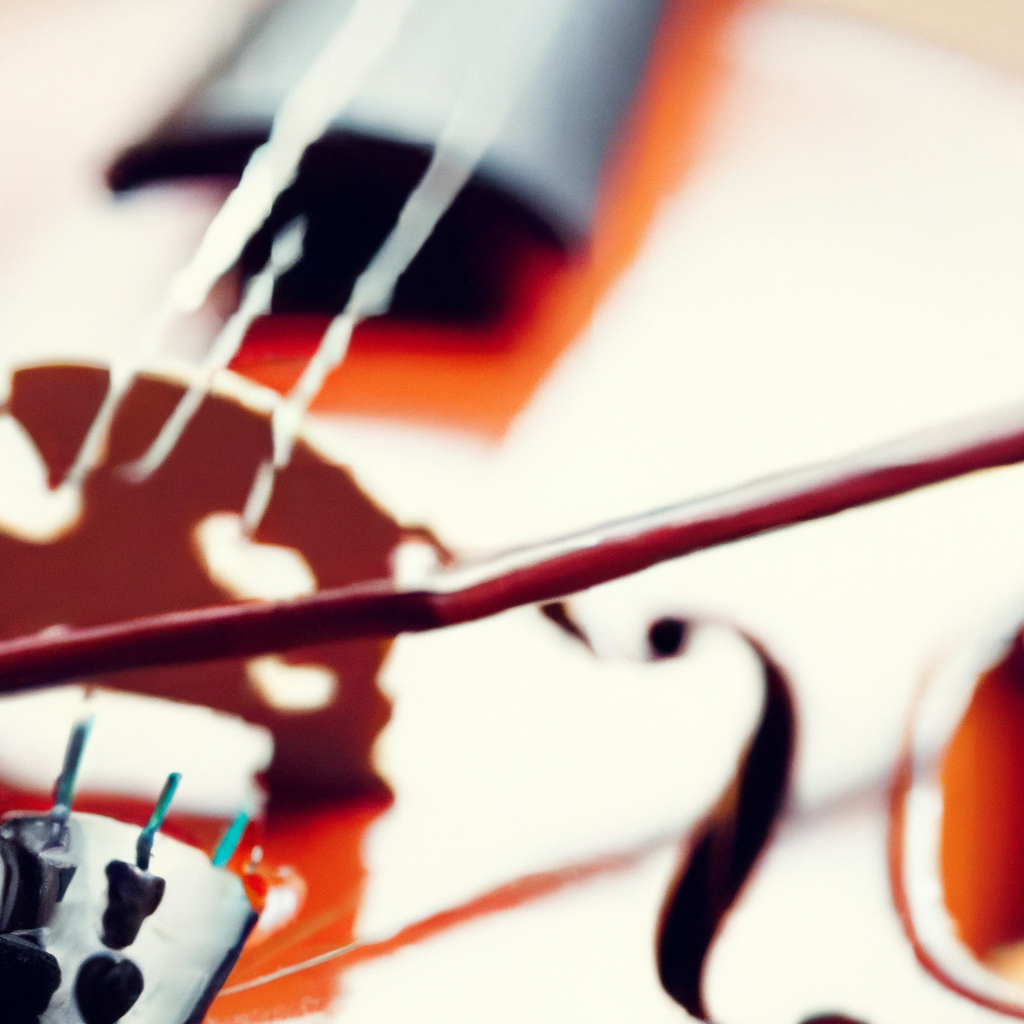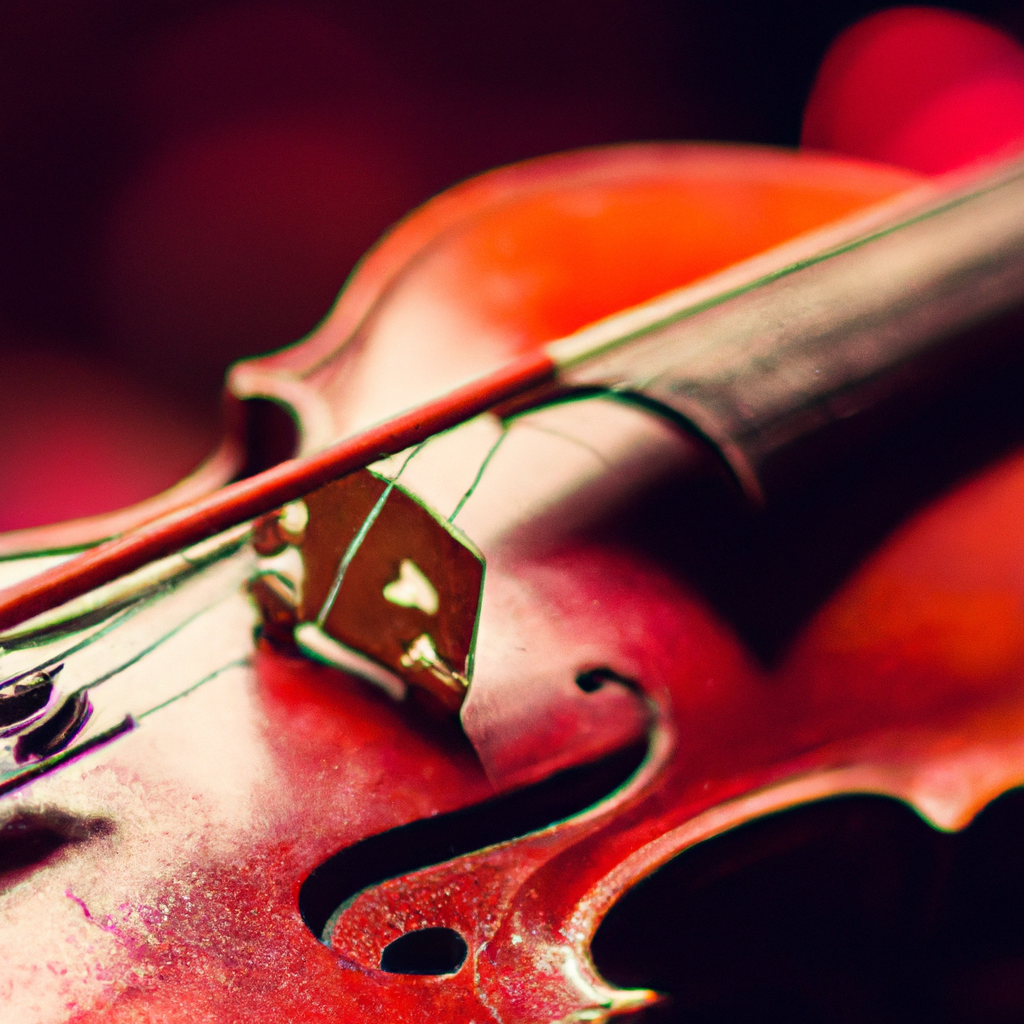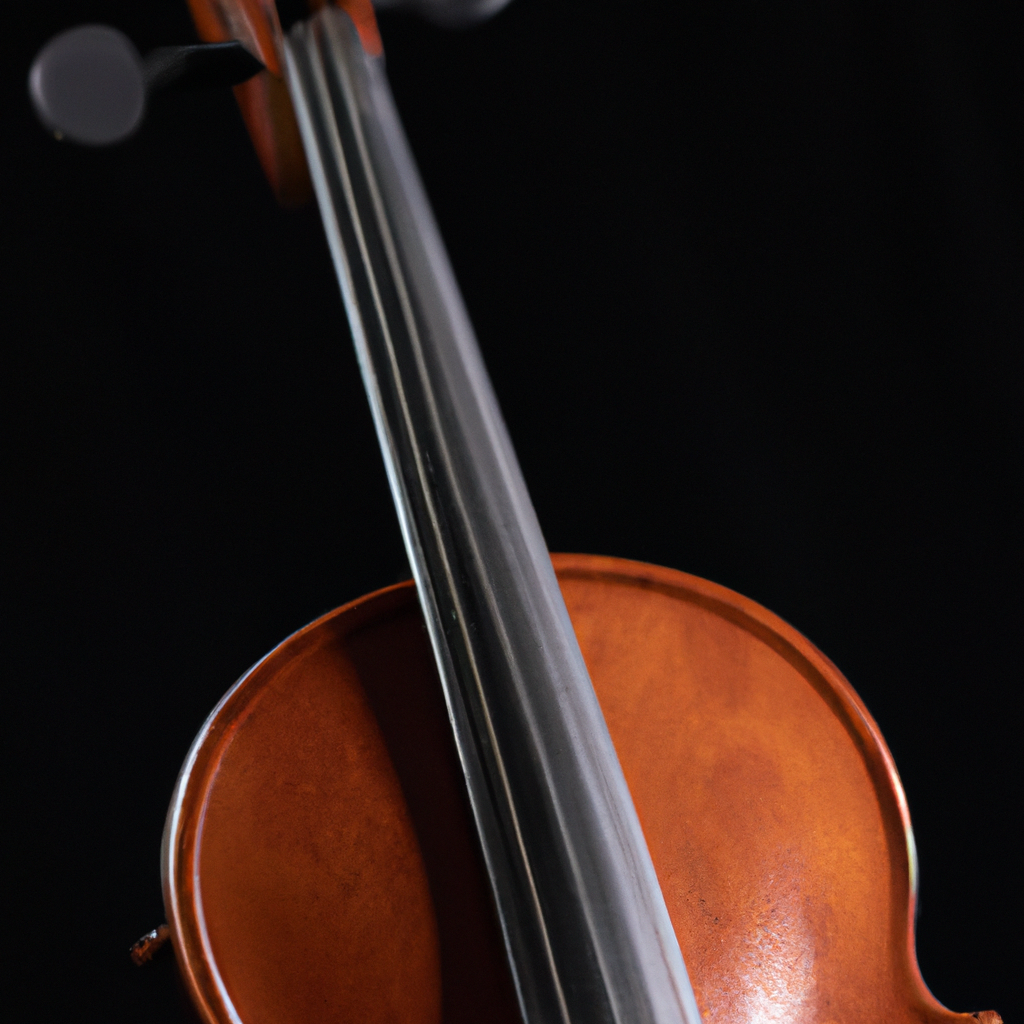
The violin is a beautiful and versatile musical instrument that has captured the hearts of music lovers for centuries. It is a string instrument that is played with a bow to produce a rich and expressive sound. Learning how to play the violin can be a rewarding and fulfilling journey for beginners, as it not only allows you to create beautiful music but also helps develop discipline, focus, and coordination.

The violin is a member of the string family and is known for its distinct shape and sound. It consists of four strings, usually tuned to G, D, A, and E. The sound is produced by drawing the bow across the strings or by plucking them with the fingers. The violin is played by pressing the strings against the fingerboard to change the pitch and using the bow to create different tones and dynamics.

Learning how to play the violin as a beginner has numerous benefits. It enhances cognitive skills, improves hand-eye coordination, and fosters discipline and perseverance. Playing the violin also allows beginners to express their emotions and creativity through music. Moreover, it provides a sense of accomplishment and the opportunity to perform in front of an audience.

Choosing the right violin is crucial for beginners to ensure a comfortable playing experience and to produce a good sound. Here are some factors to consider when selecting a violin:

Violins come in various sizes, ranging from full-size (4/4) to smaller sizes suitable for children. It is important to choose a violin size that matches the player's age, arm length, and finger span. Children usually start with smaller-sized violins and gradually move up to a full-size violin.
When choosing a violin for beginners, it is essential to consider the following factors:
In addition to the violin itself, there are several essential equipment and accessories that beginners should have:
Some essential violin accessories include:
The bow is an important component of violin playing. Beginners should choose a bow that is well-balanced and suits their playing style. It is also important to regularly clean the bow hair and apply rosin to maintain optimal performance.
Other necessary equipment for violin playing includes:
Proper violin holding and posture are essential for beginners to produce a good sound and avoid discomfort or injury. Here are some key points to remember:
The left hand should be relaxed, with the fingers curved and placed on the fingerboard. Each finger should press down on the string with the fingertips, creating a clear and clean sound.
The right shoulder should be relaxed and slightly lowered. The arm should be positioned comfortably with the elbow slightly away from the body. This allows for smooth bowing and prevents tension in the shoulder and arm.
The chin rest helps support the violin and keeps it stable while playing. Beginners should find a comfortable position for the chin on the chin rest, ensuring a secure grip without excessive pressure that may hinder violin playing.
Understanding violin notation and music theory is essential for beginners to read and interpret sheet music accurately. Here are some key points to consider:
Sheet music uses musical notation symbols to represent notes, rhythm, and other musical elements. Violin tablature, on the other hand, uses numbers to indicate which finger should be placed on which string and fret to produce a specific note.
Music theory encompasses the understanding of notes, scales, rhythm, and other fundamental aspects of music. Beginners should familiarize themselves with the basics of music theory to enhance their violin playing skills.
Reading and interpreting violin sheet music requires knowledge of musical symbols, key signatures, time signatures, and other notations. Beginners should practice reading sheet music regularly to improve their sight-reading skills.
Mastering basic violin techniques is essential for beginners to produce a clean and consistent sound. Here are some key techniques to focus on:
The bow should be held with a relaxed grip and balanced between the thumb and fingers. The pinky finger acts as a counterbalance to the index finger, allowing for control and fluid bowing.
Producing a clean and consistent sound requires proper bowing technique and finger placement. Beginners should practice bowing parallel to the bridge and maintaining consistent bow speed and pressure.
Basic scales and exercises help beginners develop finger strength, dexterity, and intonation. They also serve as warm-up exercises before playing more complex pieces.
Learning the fingerboard and correct finger placement is essential for beginners to play different notes and scales accurately. Here are some key points to consider:
The fingerboard is divided into different positions and notes. Beginners should familiarize themselves with the fingerboard's layout and the corresponding notes on each string.
Each note and scale requires specific finger placement on the fingerboard. Beginners should practice placing their fingers accurately and memorizing the position of each note on the fingerboard.
Finger exercises, such as finger stretches and repetitive finger patterns, help beginners develop finger strength, flexibility, and coordination. Regular practice of these exercises improves accuracy and speed on the fingerboard.
Mastering bowing techniques is crucial for beginners to create a variety of tones and dynamics. Here are some key bowing techniques to focus on:
There are several types of bow strokes, including down bow, up bow, staccato, legato, and spiccato. Each stroke produces a different sound effect and is used in various musical passages.
Bowing exercises, such as long bow strokes, bow lifts, and bow distribution exercises, help beginners develop control and tone production. These exercises also improve bowing technique and consistency.
Combining different bowing techniques allows beginners to add expressiveness and emotion to their playing. Experimenting with various bowing techniques and dynamics enhances musical interpretation and performance.
Practicing proper bow control and speed is essential for beginners to play with precision and accuracy. Here are some tips to improve bow control:
Smooth bowing transitions require coordination between the right arm and bow hand. Beginners should practice bowing smoothly between different strings and changing bow direction seamlessly.
Bow control is crucial for producing dynamics and expressive playing. Beginners should practice controlling bow speed, pressure, and contact point to create a range of dynamics, from soft and delicate to loud and powerful.
Bowing speed and agility can be developed through regular practice. Gradually increasing the speed while maintaining accuracy and control helps beginners achieve faster and more fluid bowing.
Playing simple melodies and songs is an exciting way for beginners to apply their newly acquired skills. Here are some tips to get started:
Beginners should start with easy violin tunes and nursery rhymes that involve simple melodies and a limited range of notes. These songs help develop finger coordination and familiarize beginners with basic violin techniques.
As beginners become more comfortable with the violin, they can gradually progress to more complex melodies. This includes playing songs with a wider range of notes, different key signatures, and more challenging rhythms.
Learning and memorizing songs effectively require consistent practice, focused repetition, and attention to detail. Beginners should break down the song into smaller sections, practice each section individually, and gradually combine them to play the entire song.
Building a practice routine is essential for beginners to make progress and maintain consistency. Here are some tips to create an effective practice routine:
Setting specific goals and objectives for each practice session helps beginners stay focused and motivated. This could include mastering a specific technique, improving intonation, or learning a new song.
A well-rounded practice routine should allocate time for various aspects of violin playing, including scales, technique exercises, music theory, and songs. Beginners should divide their practice time wisely to ensure progress in different areas.
Staying motivated and consistent in practicing can be challenging, especially for beginners. Here are some tips to maintain motivation:
Seeking guidance from violin teachers and utilizing online resources is beneficial for beginners. Here's why:
A violin teacher provides personalized guidance, corrects mistakes, and offers valuable feedback. They can tailor lessons to the individual's learning style, pace, and goals, ensuring more efficient progress.
Online tutorials and resources offer a wealth of information and instructional materials for self-learning. Beginners can access video lessons, sheet music, and practice exercises at their convenience.
A comprehensive approach to learning the violin involves combining different learning methods. Beginners can benefit from a combination of violin lessons, self-practice, online resources, and participation in music ensembles or orchestras.
Beginners often encounter common issues and have questions about playing the violin. Here are some common issues and frequently asked questions:
Common challenges faced by beginners include finger placement, intonation, bowing technique, and rhythm. These challenges can be overcome through consistent practice and guidance from a violin teacher.
Here are some frequently asked questions about playing the violin for beginners:
This comprehensive guide aims to provide beginners with the necessary knowledge and guidance to start their journey in learning how to play the violin. By following the outlined steps and practicing regularly, beginners can gradually develop their skills and become proficient violinists. Remember to enjoy the process, be patient with yourself, and seek guidance when needed. Happy playing!
Click here to find more information about violin lessons and rental services.